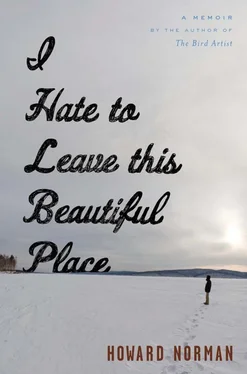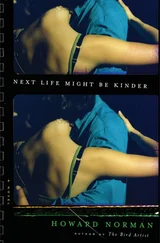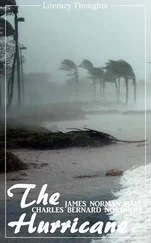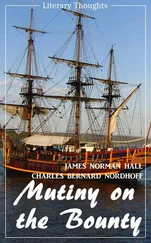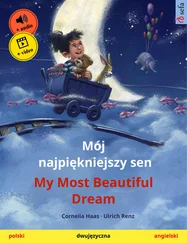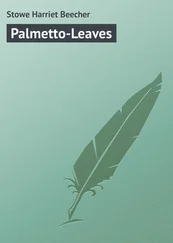From Kyle, in harrowing crosswinds, I flew with three others to Last Mountain Lake, beginning the second day of what would be an exhaustive, two-month tour of Saskatchewan’s bird preserves, during which I worked myself to a near frazzle, sleeping at most three or four hours a night. I took detailed notes and snapshots with a Polaroid Instamatic, pictures hardly professional enough for publication, meant only to later help me distinguish, along with my journal, one preserve from the next. In my inexperience, I didn’t know how to go about these commissions, except to chronicle everything I could. When I got home, I would figure out how to tailor my pieces to satisfy each editor. In the end, I succeeded in getting only one published.
But along the way, something unforeseen occurred. I began keeping a “life list” of birds, a process that I later came to see as distasteful, reducing the natural world to a kind of arithmetic. Yet during those summer months, keeping a ledger of bird names, each one like a found poem, allowed me some purchase on quotidian life.
I’d wanted to begin with Last Mountain Lake because it was the first designated bird sanctuary in North America. In autumn, a visitor could see as many as fifty thousand sandhill cranes there. Still, it being early summer, I saw peregrine falcons, piping plovers, burrowing owls, ferruginous hawks, loggerhead shrikes, terns, grebes, and pelicans.
After Last Mountain Lake I traveled to the “hummingbird capital,” the St. Walburg area; the Battlefords, especially to see the black-crowned night herons; Lloydminster for the yellow-headed blackbirds; Saskatchewan Landing for the belted kingfishers and Clark’s grebes; Quill Lake for the red-necked phalaropes and American avocets; Swift Current for the merlins and American kestrels; Grasslands National Park for the greater sage-grouses, prairie falcons, and golden eagles; Weyburn for the chestnut-collared longspurs; Moose Mountain Provincial Park for the great crested flycatchers and ring-necked ducks; Leader (where, sitting near the Leader Bridge, I got bitten on the hand by a prairie rattlesnake and was administered antivenom at the Park Service clinic, and became only mildly nauseous, though my fever spiked to 103 for a few hours; my hand was puffy, achy, and black-and-blue for a week) for the willow flycatchers, long-billed curlews, and violet-green swallows; Chaplin Lake for the thousands of Baird’s sandpipers, and the black-necked stilts and tundra swans; Duck Mountain Provincial Park for the barred owls and rare golden-winged warblers; Good Spirit Lake Provincial Park for the pileated woodpeckers; Douglas Provincial Park for the veeries, Cooper’s hawks, and migrant thrushes; Gardiner Dam and Danielson Provincial Park for the great horned owls, hairy woodpeckers, and gyrfalcons; Pelican Lake for the American white pelicans; Buffalo Pound Provincial Park for the LeConte’s sparrows and Say’s phoebes; and finally the long journey north to Wood Buffalo National Park to see — mostly to hear — the whooping cranes.
All summer, while my mind filled with birds to try to push out every other thought, discussions with park rangers and ornithologists, the Cree Indian woman who’d referred to the lifting of cranes from the water as “God-flight,” and the thousand traveled miles, I kept thinking of Mathilde (“She would’ve loved to have seen all this”), though perhaps less and less as the days went on. What helped was the practical philosophy of Robert Frost, from his poem “A Servant to Servants”: “the best way out is always through.”
In my case, I was working my way through an entire province of birds in order to emerge into whatever came next, and pretty much succeeded. Yet on my last evening at Wood Buffalo Park, I was out by a marsh, the light hazy, the full moon pale under clouds, as if borrowed for the night from a Japanese scroll, when a boisterous flock of about two dozen geese, not in the customary V shape but a more ragged formation, approached the marsh. Painted by the light of that particular dusk, they looked like grey geese descending.
I Hate to Leave This Beautiful Place
I OFTEN THINK BACK to my Grand Rapids summer of 1964, that confusing time when, as a means of escape, I obsessively studied three or four photograph-filled books on the Arctic region of Canada — its polar bears and foxes, its sea birds and narwhals, its Eskimo (before the word Inuit was in proper use) people living in those vast reaches. Had the few months in the bookmobile launched me on a trajectory that led to the Canadian Arctic? Such connections are all but impossible to assume, of course. Life does not travel from point A to point B. A whole world of impudent detours, unbridled perplexities, degrading sorrows, and exacting joys can befall a person in a single season, not to mention a lifetime. First at McGill University, and then at Western Michigan University, I took, sometimes one per semester, courses in various subjects — philology, zoology, literature — finally earning a degree from the Folklore Institute at Indiana University. And I had to keep finding ways to pay tuition. With assistance from professors and museum directors, and a willingness to live in remote places, I signed up for postings in half a dozen Arctic locales in order to record Inuit life histories, medical histories, and folktales. Looking back, I suppose I had some vague notion of writing about all of this, but mainly I needed the money. And these were the kinds of jobs few people volunteered for. To reduce it to practical terms, it was ready work, where and when I needed it. In the end, I think it’s fair to say that nearly a decade of piecemeal Arctic jobs and traveling provided an apprenticeship in writing and thinking. The ubiquitous blessing was that I got to experience the languages, cultures, and spirit presences that verified the assertion set forth in a poem by Paul Éluard: “There is another world but it’s in this one.”
In December 1980, I was in Eskimo Point, in the Canadian Northwest Territories. On the eighth of that month, I wrote on a page of my journal, “Today John Lennon died.” That afternoon, in the Arctic’s crepuscular light, the Inuit pilot Edward Shaimaiyuk stood next to his Cessna on the hard-packed snow landing strip, which had been sprinkled with crushed coal for traction, and said, “I’m going south to Canada.”
Edward was about sixty years old. Leaning against his plane, he began to shout what to my ears were desperate-sounding implorations in his language, the Quagmiriut dialect spoken along Hudson Bay. It had begun to snow hard, and the snow was mixed with slanting sleet. The sky was shifting dark clouds west to east. Edward was addressing Sedna — I distinctly heard the name — who is the ancient and powerful woman-spirit who controls the sea and to some extent the air and ice over the sea. For centuries, ever since she was betrayed by her cousins and exiled to the sea bottom, she has maintained an entourage of sea spirits who do her retributive bidding, and has comported herself with severe and unpredictable moodiness, exhibiting an uncanny repertoire of punishments, some lethal, in response to the cruelty, greed, and spiritual trespasses of human beings. To say that Sedna can act in a capricious manner is to say that there are stars in the sky.
One consequence of Sedna’s behavior is that Inuit people have a provisional relationship with her, and must constantly be vigilant not to offend. Sedna has to be appeased daily, and prayer is one way to do this. Prayers as in what Edward Shaimaiyuk was shouting — he knew she was causing weather hazardous to fly in. He was apologizing, seeking forgiveness, although I didn’t know for what, exactly.
In its intensity Edward’s wild prayer was both mesmerizing and disturbing. He had worked himself nearly to tears. Again, I didn’t know for which trespass he was asking pardon — with humankind there were so many and they occurred so frequently — nor did I know if I should even have been looking at him. What is the proper decorum in the presence of such a dramatic and intimate petition for mercy from invisible forces?
Читать дальше
